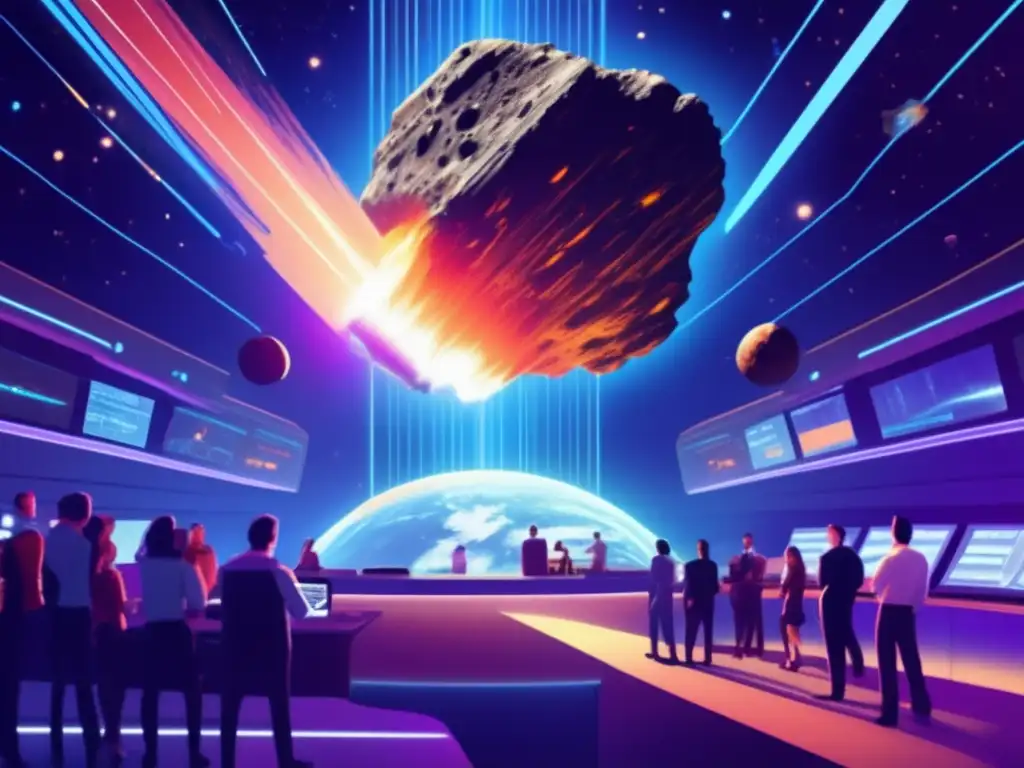Preventing Skyfall: Tools For Planetary Defense

Introduction
As we explore space and our solar system, the threat posed by asteroids colliding with Earth becomes increasingly apparent. In 2013, a meteor exploded over Chelyabinsk, Russia, injuring more than 1,000 people. That same year, an asteroid measuring approximately 60 feet in diameter passed just 17,200 miles from Earth's surface, far closer than the moon. Clearly, we need to develop tools and techniques for preventing these so-called "skyfall" events.
Asteroid Detection

Ground-based Observations
Currently, most asteroids are discovered by ground-based telescopes. These telescopes survey the sky for potentially hazardous objects and try to predict their future orbits. However, ground-based observations have limitations. They can only detect asteroids when they are close enough and bright enough to be seen. Smaller asteroids are also harder to see. In general, the smaller the asteroid, the harder it is to detect in advance.
Space-based Observations
To improve asteroid detection, NASA has launched several space-based telescopes, including the Wide-field Infrared Survey Explorer (WISE) and the Near-Earth Object Wide-field Survey Explorer (NEOWISE). These telescopes use infrared light to detect asteroids that might be missed by ground-based telescopes. Additionally, NASA's upcoming Nancy Grace Roman Space Telescope will be used to look for NEOs at infrared wavelengths.
Early Warning Systems
Once an asteroid has been detected, an early warning system is necessary to alert the public and give authorities time to prepare. The International Asteroid Warning Network (IAWN) was established in 2013 to improve communication and coordination among organizations involved in asteroid detection and tracking. Additionally, the United Nations Office for Outer Space Affairs (UNOOSA) coordinates the Space Mission Planning Advisory Group (SMPAG) to provide recommendations for space missions to prevent or mitigate asteroid impacts.
Preventing Impact

Gravity Tractors
A gravity tractor is a spacecraft that uses its own gravitational pull to slowly deflect an incoming asteroid. By hovering near the asteroid, the spacecraft's gravity gradually changes the asteroid's orbit over time. This method requires early detection and a long lead time, but it is a potentially low-cost solution that doesn't require destroying the asteroid.
Kinetic Impactors
A kinetic impactor is a spacecraft that collides with an asteroid at high speed to change its trajectory. NASA's Double Asteroid Redirection Test (DART) mission, launching in 2021, will be the first asteroid deflection test to use this method. It will target a binary asteroid system, Didymos, and collide with the smaller asteroid to change its orbit. This method requires precise timing and accuracy, but it could be effective for smaller asteroids.
Nuclear Explosives
Although potentially controversial, nuclear explosives have been suggested as a way to deflect larger asteroids in a short amount of time. Theoretically, a nuclear detonation near an asteroid could vaporize enough material to create a "rocket effect" that would push the asteroid off course. However, this method has significant risks and uncertainties, including the possibility of creating multiple smaller fragments that could still pose a hazard.
Public Preparedness

Emergency Response Plans
Public preparedness is important in the event of a skyfall. Emergency response plans should include evacuation procedures, shelter locations, and communication strategies. These plans should also incorporate the unique challenges posed by an asteroid impact, such as the possibility of wildfires, tsunamis, and earthquakes.
Education and Outreach
Public education and outreach can help raise awareness of the asteroid threat and promote preparedness. Organizations such as the B612 Foundation and Planetary Society provide resources and educational materials to the public. NASA also offers educational programs on asteroid science and planetary defense to inspire the next generation of space explorers.
Frequently Asked Questions

-
What is the likelihood of an asteroid impact?
While the probability of an asteroid impact is low in the short term, it's not zero. NASA estimates that there are more than 1 million NEOs larger than 30 meters in size, and we have only discovered a small fraction of them.
-
What is the difference between a comet and an asteroid?
Asteroids are rocky or metallic objects that orbit the sun, while comets are made up of ice and dust and typically have long, glowing tails when they pass close to the sun.
-
Can asteroids be destroyed?
It's possible to destroy an asteroid, but it may not be the best solution. Destroying an asteroid could create multiple smaller fragments that could still pose a hazard, and using explosives would require precise timing and accuracy.
-
What is the biggest asteroid that has ever hit Earth?
The Chicxulub impactor, which struck Earth approximately 66 million years ago, is estimated to have been about 10 to 15 kilometers in diameter.
-
What can I do to help prevent a skyfall event?
You can stay informed about the threat posed by asteroids and support efforts to improve asteroid detection and deflection technologies. You can also prepare yourself and your family for emergency situations, including those caused by natural disasters.
Conclusion
The threat of asteroid impact is real, but we have the tools and knowledge necessary to prevent skyfall events. Early detection, effective deflection strategies, and public preparedness are key components of any planetary defense plan. By continuing to invest in asteroid science and space exploration, we can work towards a future where skyfall events are a thing of the past.
Thank you for taking the time to read this article. Please share your thoughts in the comments section below, and consider subscribing to www.asteroidrealm.com for more asteroid-related content and updates.
Additional Resources

 Asteroid Outpost: Strategies And Techniques In Planetary Defense
Asteroid Outpost: Strategies And Techniques In Planetary Defense Collision Course: How We Plan To Prevent Asteroid Impacts
Collision Course: How We Plan To Prevent Asteroid Impacts Planet Protectors: The Strategies For Asteroid Defense
Planet Protectors: The Strategies For Asteroid DefenseIf you want to discover more articles similar to Preventing Skyfall: Tools For Planetary Defense, you can visit the Planetary Defense category.
Leave a Reply

Articulos relacionados: